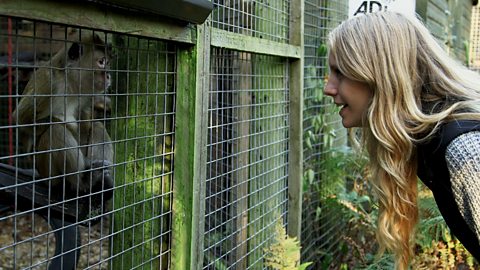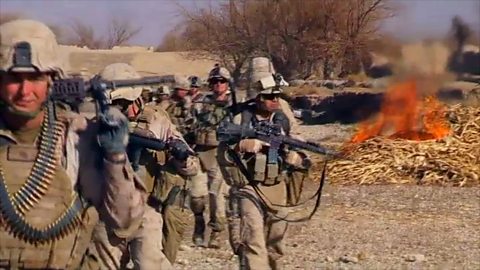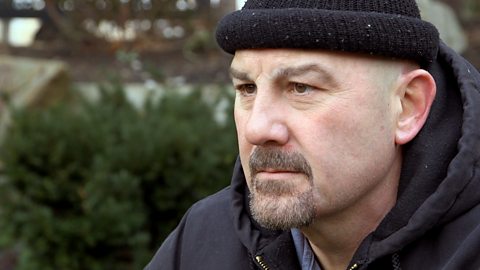Video summary
An exploration of some of the ethical and moral questions around the issue of abortion, focusing on Anna and Marie, whose life experiences have left them on contrasting sides of the debate.
Anna, having had an abortion at the age of 17, believes everyone should have the right to choose if they want to be a parent. Marie, a mother of a young daughter with Downβs Syndrome, believes that every child has the right to live.
This poses the question: What are the rights and wrongs of abortion?
Abortion is legal in the UK; however, this has not always been the case.
In, 2019 Northern Ireland decriminalised abortion, applying the same laws and principles as the rest of UK. Previously, a woman could only terminate a pregnancy if her life were at risk, or there was danger to her mental or physical health. These relatively recent events have placed the issue back into the spotlight. Opinion remains divided over when and how women should have access to the procedure.
This short film explores the moral and practical issues of abortion, from both religious and non-religious perspectives. It provides students with the opportunity to evaluate a range of beliefs, prior to consolidating their own viewpoint.
This clip is taken from the ΒιΆΉΤΌΕΔ Two series, Matters of life and death.
PLEASE NOTE: THIS FILM INCLUDES DISCUSSIONS ON ABORTION. TEACHER REVIEW IS RECOMMENDED PRIOR TO USE IN CLASS.
Teacher Notes
The clip provides two contrasting views regarding abortion.
Anna believes that anyone who is pregnant should have the right to an abortion. At 17, she was in a relationship with her first love, when she became pregnant. She was not ready to be a mother and considered herself to still be a child. She felt as if she was being punished for one mistake. Anna believes that it would be unfair to bring an unwanted child into the world. She does not consider that a foetus has any rights, as it could not exist outside of the body of its mother. Having had an abortion at six weeks, she does not feel any regret. The decision has allowed her to live her life the way in which she wanted. Anna ultimately believes that women should have the right to choose when and if they become mothers.
Contrastingly, Maria believes that every unborn child has a right to life. For her, life begins at conception and every foetus has a soul and the potential to be fully human. Maria comes from a Christian background and as such believes that life is sacred, we have no right to take it. When Maria was pregnant with her daughter, she was informed that she had a high risk of being born with Down's Syndrome. She went ahead with the pregnancy, placing her trust in the belief that no matter how difficult the circumstances, good would always come from it. Although raising her daughter has been challenging at times, she would not change a day and believes that we should celebrate and learn from everybodyβs differences.
The clip concludes with representatives from various faiths and humanist societies, explaining their views on abortion and linking them to their belief systems.
Before watching the film:
Issues addressed within the clip may well personally affect students within the classroom.
You should preview the footage, to familiarise yourself with the content and enable you to pre-warn students of its sensitive nature. Specifically, the clip references teenage pregnancy and abortion and delivers personal testimonies in relation to these issues. You should be equipped to signpost students to relevant support agencies should the topics discussed raise personal concerns.
You will need to approach with sensitivity and remind pupils to be empathetic towards others were there are differing viewpoints.
You may find it useful to introduce or revisit βethicsβ prior to watching the clip. You may wish to explore the following:
- What is an βethical issueβ?
- What should form the basis of our βethical decisionsβ?
- What is quality of life?
- What is UK law around abortion and how does this compare with other countries?
- What is Down's Syndrome and how does it impact on the lives of people who are born with the condition?
- Discussion of medical terminology such as embryo and foetus.
During clip:
You may find it beneficial to pause the video in order to check for understanding. The following questions make useful discussion points:
- At 17, was Anna in a position to be a mother?
- At what age are people ready for parenthood? Why might this differ for everyone?
- What factors could be considered when deciding whether to have a baby?
- Does a foetus have rights?
- Does a foetus have a soul?
- How might Anna's life have been different if she had of gone ahead with the pregnancy?
- Is a teenager equipped to make the decision to have an abortion?
- What might be the short-term and long-term emotional effects of abortion?
- What might life have been like for women prior to abortion laws being introduced into the UK?
- Does Maria's daughter have quality of life?
- Why do you think that 90% of pregnancies are terminated if the foetus has a risk of Down's Syndrome?
- How might someone with Down's Syndrome or a parent of someone with Down's Syndrome, feel about these statistics?
- Up to what point of the pregnancy should abortions be permissible?
- Are there any circumstances under which an abortion should not be allowed?
- Who should make the decisions around whether a woman should be allowed an abortion?
- Should the father be given any rights over the foetus and a role within the decision-making process?
- Who has more rights β the mother or the unborn child?
Following on:
You could support students in consolidating their learning, deepening their understanding of the issue and applying exam skills in context. Suggested tasks:
- Lead a class discussion or debate around the question βWhat are the rights and wrongs of abortion?β. This could be informal or more structured. The class could be divided into smaller groups and students could be asked to research arguments to represent a particular viewpoint e.g. Humanist, Hindu, Sikh. Alternatively, students could be asked to do their own independent research with some guidance, in order to participate in a free-flowing debate. This could also be carried out in the form of a βsilentβ debate, having students write down their responses on large sheets of paper or tables. Students could be encouraged to respond to each other to develop evaluative skills.
- Signpost students to campaign groups supporting both anti-abortion and pro-choice. Explain the difference between the two viewpoints and ask students to research them.
- Present recent statistics in relation to abortion. This is available on the government website. Ask students to evaluate data and explain trends. They could then compare this with other European countries and consider factors which may have an impact on these figures.
- In relation to religious responses, students could be presented with a collection of scripture or religious teachings relating to the religions which they are required to study. This could be in the form or a card sort (separating those arguments for and against) and they could then be asked to explain the rationale behind their choices.
- Organise and deliver a carousel task, allowing students to collate information regarding different religious viewpoints. This could be related to specific questions or they could be asked to fill out a grid which they could use to compare beliefs.
- Facilitate an in-depth study into one religious perspective (individually or in groups) and present this to the class who could take notes.
- Ask students to complete a timeline relating to abortion laws in the UK. Ask them to evaluate key changes with respect to a change in the role of women throughout recent history.
- Consider the implications of abortion being previously illegal in the UK and evaluate the impact of such legislation. They could then compare this to abortion laws globally and use specific countries as case studies. Ask students to analyse whether there is a correlation between abortion laws and womenβs rights.
- Complete an in-depth case study into legislation changes in Northern Ireland. This could include a study of Human Rights legislation and consideration of the legal challenges posed in response to the law change.
- Students could be asked to complete a βVenn Diagramβ in which they identify similarities and differences between two religious viewpoints.
This short film will be relevant for teaching Religious Studies.
This topic appears in OCR, Edexcel, AQA, WJEC KS4/GCSE in England and Wales, CCEA GCSE in Northern Ireland and SQA National 4/5 in Scotland.
Is it ever right to experiment on animals? video
Christina's and James' life experiences have left them on different sides of this debate. Representatives of different faiths and religions are also featured, explaining their perspectives on animal testing.

Is it okay to have a child to save another? video
We hear from two people with opposing views before representatives of different faiths and religions explain their perspectives.

When is it right to go to war? video
We hear responses to this question from two people with contrasting opinions. This is followed by various perspectives on the question from religious and humanist leaders.

What are the rights and wrongs of the death penalty? video
An exploration of the ethics around capital punishment. Representatives of different faiths and religions explain their perspective on the death penalty.
